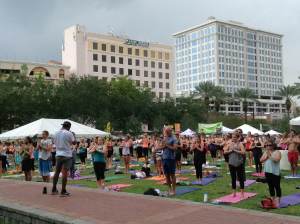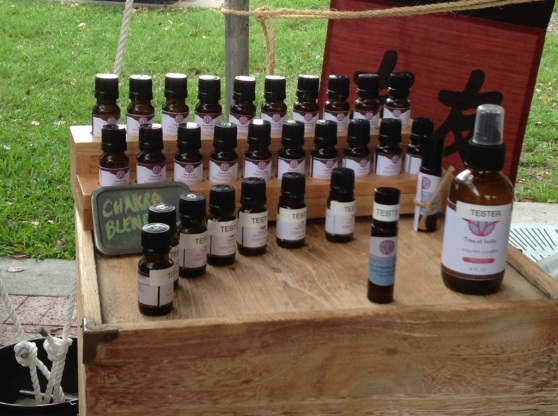Florida state wildlife officials have increased their efforts at controlling the lionfish invasion along coastal waters after recent findings reveal that that the venomous fish pose a tremendous threat to the state’s coral reef ecosystem and fishing industry.
One study, published in the Marine Ecology Progress Series, examined the number of Atlantic coral-reef fish populations before and after the invasive Indo-Pacific lionfish was introduced. The experiment concluded that there were significantly less fish in the reefs where lionfish were present as a result of the species’ indiscriminate feeding habits, rapid reproduction, and resistance to parasites. Research also revealed that lionfish feed on ecologically important species, like the parrotfish, which are vital to the reef’s survival and biodiversity.
“We don’t have any other marine fish to compare this to […] if they run out of food, that means our reef has run out of fish,” says Erin McDevitt, marine biologist for the Florida Fish and Wildlife Conservation Commission (FWC).
Lionfish are known for their aggressive tendencies and inconspicuous hunting tactics. They corner their prey using their fan-shaped pectoral fins then in one fell swoop swallow their target whole. Some have even characterized it as a “gulping attack”. Researchers have observed lionfish prey on at least 56 different species of native fish and crustaceans including many economically important kinds like snapper, grouper, grunts, and cleaner shrimp.
“[They] are voracious predators. They eat just about anything they can fit in their mouths,” says Karrie Carnes, Communications Coordinator for the Florida Keys National Marine Sanctuary.
Coral reefs in South Florida are estimated to generate around $6.1 billion in sales and income annually. Because lionfish prey on so many of the native species that keep the reef ecosystems in balance, they risk disturbing Florida’s fishing and marine based economies.
Some officials believe that the fish were first introduced to Atlantic waters in 1992, when several were released from an aquarium during Hurricane Andrew. Others wonder if the introduction might have occurred as multiple events. Regardless of these theories, a 2009 sighting in the waters off Key Largo is what really sparked national media attention about the emerging threat. Since then, lionfish colonies have been spotted as far north as Rhode Island and as far south as the Caribbean, according to another study published in the Physis Journal of Marine Science.
Lionfish have the ability to live up to 15 years and can reach up to 20 inches in length. They also become sexually mature within one year which means that they can start reproducing a short time after their birth. On average, females release 30,000 eggs per spawn and can spawn every four days year-round.
Based on an algorithm created by the National Oceanic and Atmospheric Administration (NOAA), it’s estimated that there were 89,000 lionfish in the Florida Keys in 2010. Only one year later, in 2011, the numbers suggest that there were 335,000. That tremendous growth is the result of their high reproductive rates and the lack of natural reef predators. Native fish are also unfamiliar with the lionfish so don’t know how to respond to their unusual hunting techniques.
“Native predators exhibit avoidance of lionfish. It’s a novel species that they may not recognize as a prey source,” says Adam Nardelli, researcher at the Nova Southeastern Oceanographic Center.
To combat the population and prevent a further decline in native species, officials are encouraging divers and fishermen to hunt them. Last August, the FWC temporarily waived the recreation fishing license requirement in addition to removing bag limits which prevent fishermen from harvesting more than 100 pounds of the species. According to the Associated Press, the FWC hopes to permanently enact these changes in June.
The Reef Environmental Education Foundation (REEF) is also fighting back by organizing lionfish derbies to raise awareness of these predators, promote the development of the commercial lionfish market, and keep populations under control.
“We never said that we’ll be able to eradicate them because that’s impossible,” says Carnes. “We need to learn to adapt and manage.”
The derbies are one day team competitions where participants are permitted to use pole spears, handheld nets, and Hawaiian slings to capture as many lionfish as possible. Cash prizes are awarded to teams who capture the most, largest, and smallest lionfish. The total lionfish count for all REEF sponsored derbies in the Florida Keys, South Florida, and the Bahamas since 2009 has been 10,231.
Following these derbies, participants are encouraged to prepare their catch using one of the many recipes from the REEF sponsored “Lionfish Cookbook”. Often compared in taste to the hogfish, lionfish has been praised for its sweet, delicate flavor.
Aside from their popular taste, there is an upside to the invasion, as many researchers points out. The lionfish exhibit high site fidelity and will stay in the same location as long as there’s food available. This makes it much easier to document their numbers and then facilitate their removal, says McDevitt.
At this point, the fate of the lionfish remains unknown, but officials are doing their best to keep populations in check and restrict further damage to the reef and aquatic ecosystem.






